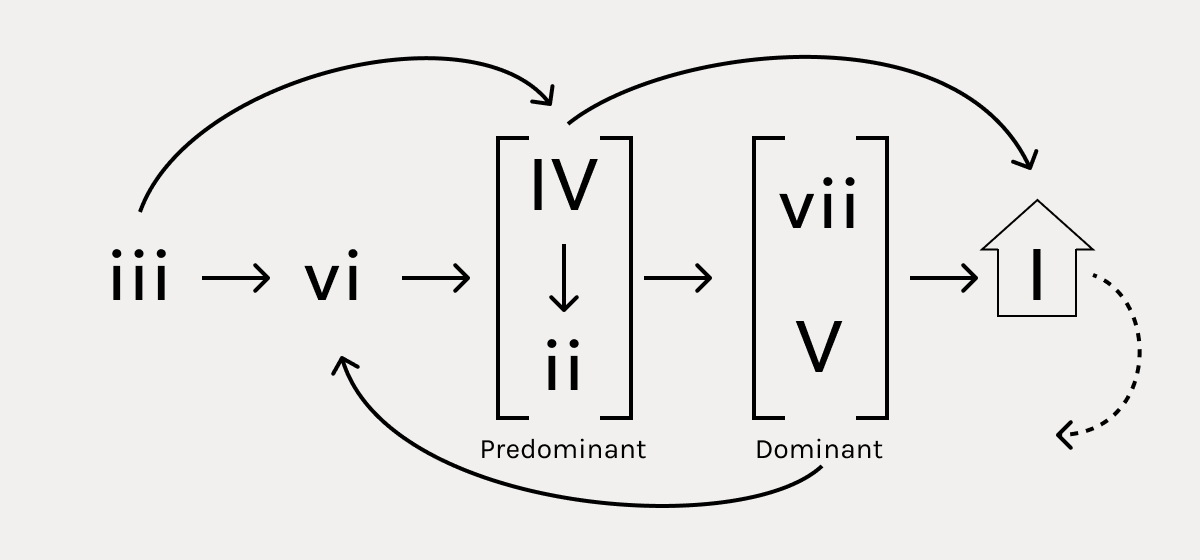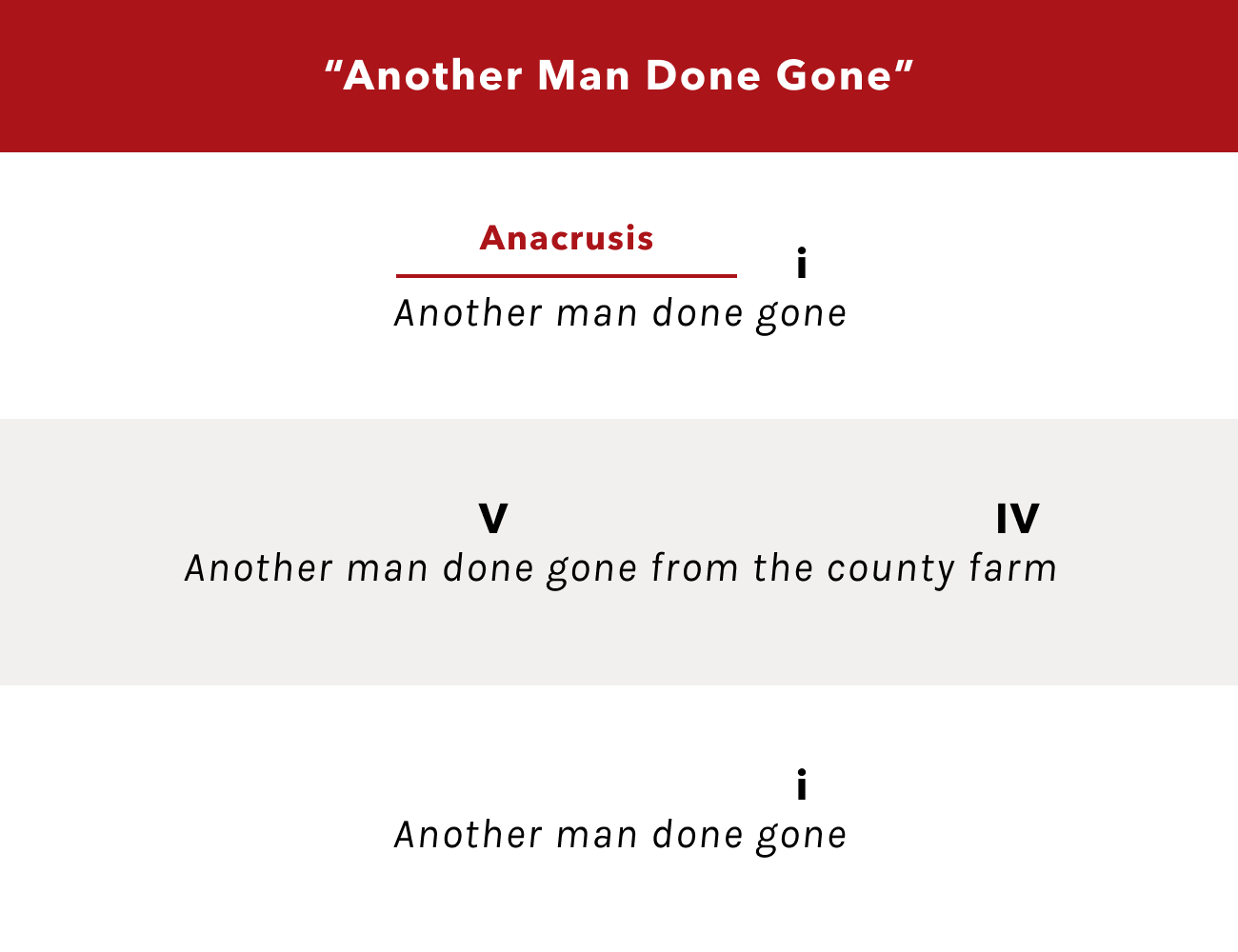
Thematic and Musical Analysis of Field Hollers and Work Songs (Continued)
The following listening example offers contrasting elements of the song style. This piece, though unaccompanied, bears the harmonic structure of the blues. The tonicThe note upon which a scale or key is based; the first note of a scale or key; the keynote. (I or i), dominantThe fifth tone of a scale. (V), and sub-dominantThat tone that is one step below the dominant of a key. (IV) are the basis of the diatonic sequence, as shown here:
The arrows indicate where each progression must finally lead to satisfy the sequence. The dotted arrow from the tonic means that the tonic may lead to any chord, as you will hear in this example. What follows is an analysis of the work song "Another Man Done Gone".
A lowercase tonic denotes that the piece is in a minor key. However, if it were genuinely minor, the subdominant chord would also be minor (iv). Hence, the word "blues." The one note that authentically differentiates major from minor is the third of the tonic chord. The flattened third in a major key, known as the "blue note," lends a solemn sense of sadness to the music.
The Evolution of the Hollers
Although words are important, it is the holler that embodies the expressive nature of the music. The holler differs from the call and the shout by how detached the person who transmits the holler is from his or her addressee. Whereas the call is typically addressed to a specific person, animal, or domesticated fowl, and the shout projected to a distant but identifiable target, people emit the holler to whoever may be within earshot. As a term, "holler" is considered North American in origin and a dialect form of the earlier "hallo" or "halloo," used since the early eighteenth century to urge hunting dogs in the chase. It was also employed to drive unwanted animals away and call in the hounds after the hunt. In the United States, the word may also be derived from the greeting "hallo," "halloah," or, in its current form, "hello," when used as a general cry to seek human contact or to establish the location of the hailer in a wilderness area. This style of singing continues to evolve.
Ashenafi Kebede
There is no doubt that these calls were African in derivation and that they were sung in African dialects in the early part of slave history.
Luke 9:62, NKJV
No one, having put his hand to the plow, and looking back, is fit for the kingdom of God







